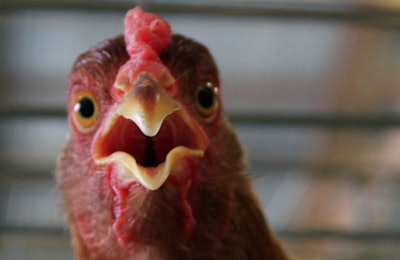
Although pet food consumers may demand fresh chicken as the first ingredient on dry dog food labels, researchers discovered that rendered poultry meal may provide similar quantities of essential amino acids after extrusion. Similarly, in uncooked wet pet food, processed fish by-products were three percent more digestible than raw chicken in experimental results published in the Journal of Animal Physiology and Animal Nutrition.
“If fresh chicken meat makes a food better is an interesting question, from our results it seems that it does not improve amino acid content or digestibility compared with a poultry meal,” study co-author Øystein Ahlstrøm, PhD, associate professor of biosciences at the Norwegian University of Life Sciences, told Petfood Industry. “The poultry meal had about the same digestibility as the fresh meat after extrusion.”
Ahlstrøm’s team conducted an experiment on the digestibility of crude protein and amino acids in protein sources used for dog food. First, the researchers made three separate wet, unprocessed dog foods with either raw mechanically separated chicken, salmon protein hydrolysate (SPH) or poultry meal. Of these protein sources, the apparent total tract digestibility of the SPH was highest at 91.3 percent, followed by the raw chicken at 88.2 percent. The unprocessed poultry meal recipe was significantly lower at 80.9 percent.
Digestibility of protein sources in extruded dog food
In a separate experiment, the scientists made three versions of a dry dog food recipe using poultry meal. In two of the recipes, they substituted either raw chicken or SPH for 25 percent of the poultry meal’s protein in the recipe.
“The chicken meat…did not increase the digestibility as expected,” Ahlstrøm said. “The motivation of the study was to find protein sources that could raise protein digestibility to above 85 percent, but we did not succeed.”
Instead, Ahlstrøm’s team found that extrusion seemed to negate the higher digestibility of the mechanically separated chicken and SPH. After extrusion, all three protein sources had digestibility values between 79 and 81.3 percent.
Ahlstrøm believes heat during extrusion may be the culprit in reducing raw chicken’s nutritional value. He saw evidence for this in the quantities of individual amino acids after extrusion.
“Single amino acid digestibilities, especially for aspartic acid and to a certain degree cysteine, which is known to be heat sensitive, revealed a disproportionate reduction when tested in the extruded food compared to when tested alone,” he said.
Design of dog food protein digestibility study
In the experiment, mink (Neovison vison) stood in for dogs, since the small mammals digest food similarly to canines. Along with the different protein sources, the experimental foods fed to the mink used standard ingredients, including precooked corn starch, cellulose powder, soy bean oil, water and a supplement of vitamins and minerals.
The mechanically separated chicken was stripped from broiler carcasses. The SPH contained a blend of viscera, heads and frames of salmon, which had been broken down, or hydrolyzed, by an enzyme.















